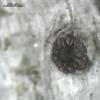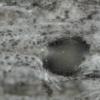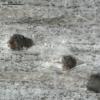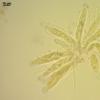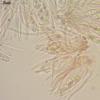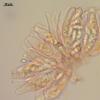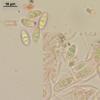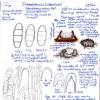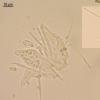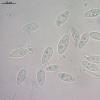
12-11-2025 09:25
 Viktorie Halasu
Viktorie Halasu
Hello, I need help with a pale terrestric Pseudom

11-11-2025 20:16
Bohan JiaHi, lastly I have found these tiny yellow decayin

09-11-2025 13:20
Hello.A tiny ascomycete, appearing as erupting gra

08-11-2025 00:29
 Francois Guay
Francois Guay
I found this species in Quebec, Canada, on herbace
It grew on decorticated bleached wood of standing-dead pines (Pinus sylvestris) (N61,054422° E69,456725°).
Apothecia submerged in wood, spherical to deep cupulate, up to 300 mk wide, hymenium grayish, yellowish, smooth, outer surface rough, dark brown, radially splitted.
Excipulum from thick mass of cylindrical hyphae (not well distinguishable); asci bottle-shaped, bulged in the middle, extending in length when mature, clampless, near 60 x 15 mk, wall of ascus with amyloid reaction in upper part, pore inamyloid; spores ellipsoid, 3-segmented when mature, 12,7 (11,4-14) x 5,7 (5,3-6,1) mk; paraphyses filiform (1 mk thick), rare segmented at base.
I used the key in: Sherwood-Pike, M.A., 1987. The ostropalean fungi.

So I assume yours is the right O. minus.
Zotto

Sherwood's specimen has also quite many septa but what she draws is actually the dead plasma, not the cell wall, so the septa look thick.
Zotto


